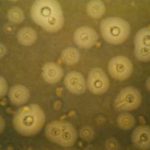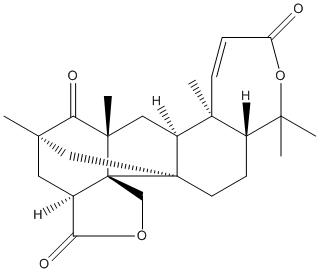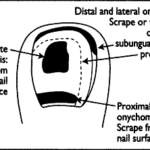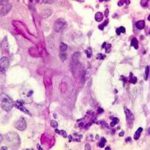Date: 26 November 2013
Secondary metabolites, structure diagram: Trivial name – Andilesin C
Copyright: n/a
Notes:
Species: A. stellatusSystematic name: 5,14a-Methano-1H,14aH-furo[3′,4′:4b,5]fluoreno[2,1-c]oxepin-3,6,10(5H)-trione, 4,5,6a,7,7a,7b,12,12a,13,14-decahydro-5,6a,7b,12,12-pentamethyl-, (3aS,5R,6aR,7aS,7bR,12aR,14aS,14bR)-Molecular formulae: C25H32O5Molecular weight: 410Chemical abstracts number: 72676-00-7Selected references: Dunn, Andrew W.; Johnstone, Robert A. W.; King, Trevor J.; Lessinger, Leslie; Sklarz, Benjamin (Robert Robinson Lab., Univ. Liverpool, Liverpool L69 3BX, Engl.). J. Chem. Soc., Perkin Trans. 1, (9), 2113-17 (English) 1979.
Images library
-
Title
Legend
-
BAL specimen showing hyaline, septate hyphae consistent with Aspergillus, stained with Blankophor
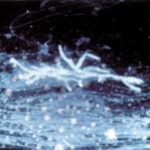
-
Mucous plug examined by light microscopy with KOH, showing a network of hyaline branching hyphae typical of Aspergillus, from a patient with ABPA.
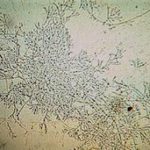
-
Corneal scraping stained with lactophenol cotton blue showing beaded septate hyphae not typical of either Fusarium spp or Aspergillus spp, being more consistent with a dematiceous (ie brown coloured) fungus
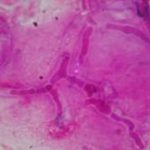
-
Corneal scrape with lactophenol cotton blue shows separate hyphae with Fusarium spp or Aspergillus spp.
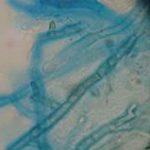
-
A filamentous fungus in the CSF of a patient with meningitis that grew Candida albicans in culture subsequently.
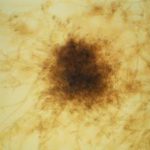
-
Transmission electron micrograph of a C. neoformans cell seen in CSF in an AIDS patients with remarkably little capsule present. These cells may be mistaken for lymphocytes.
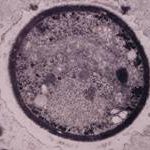
-
India ink preparation of CSF showing multiple yeasts with large capsules, and narrow buds to smaller daughter cells, typical of C. neoformans
